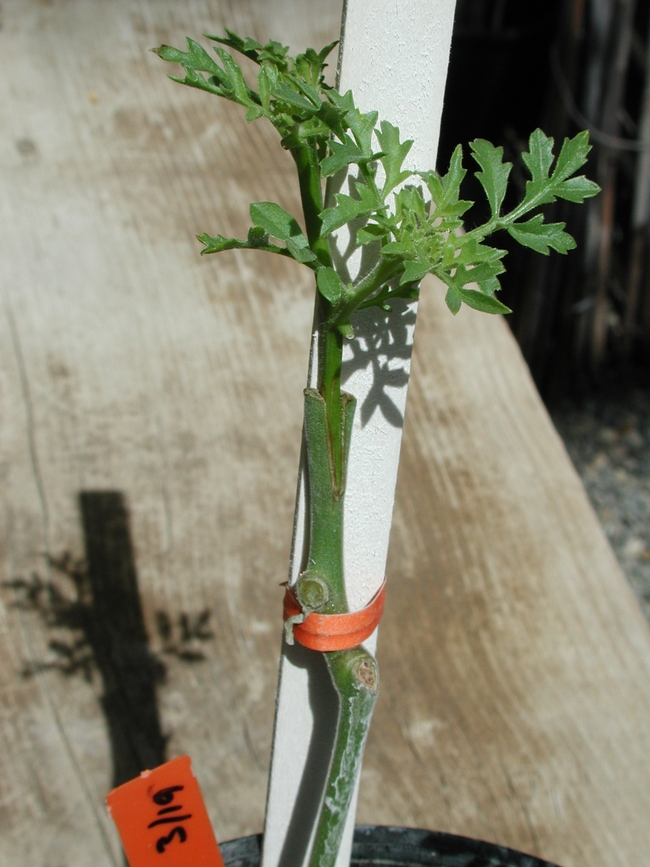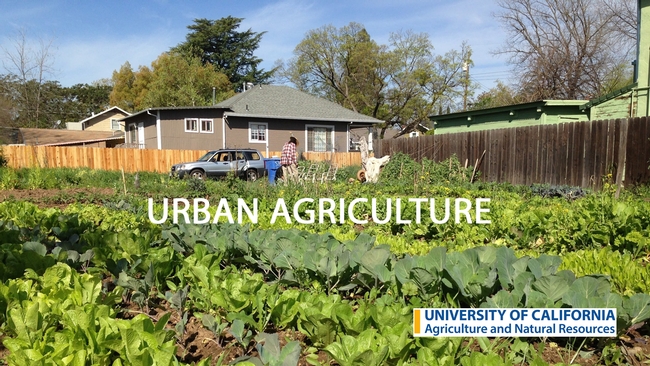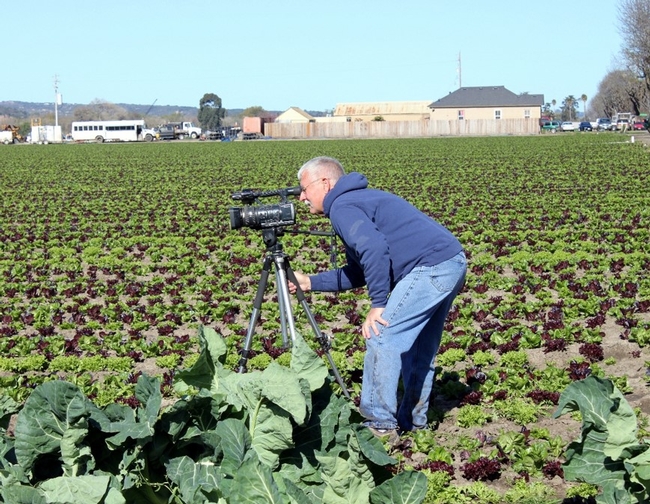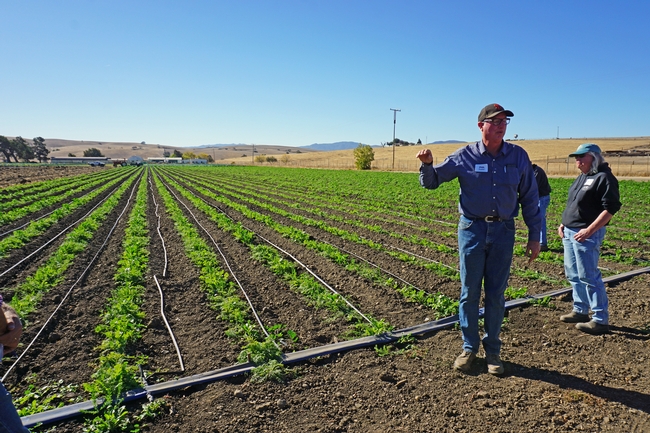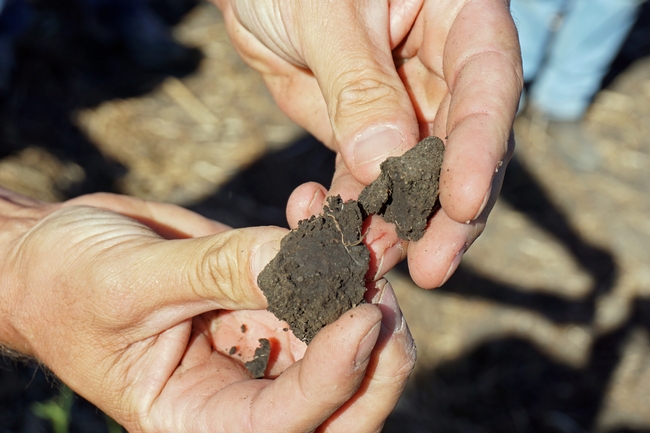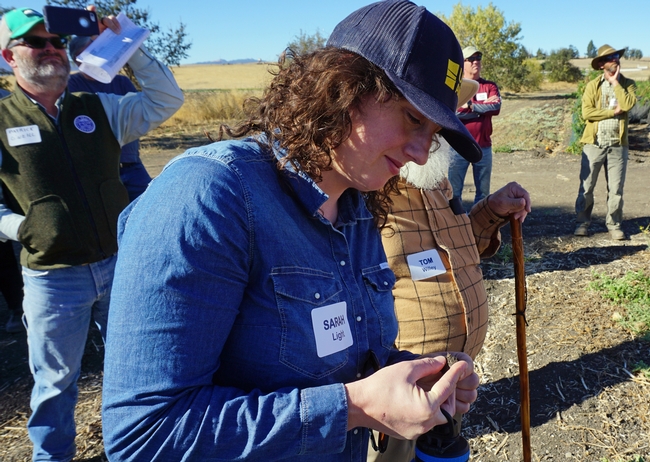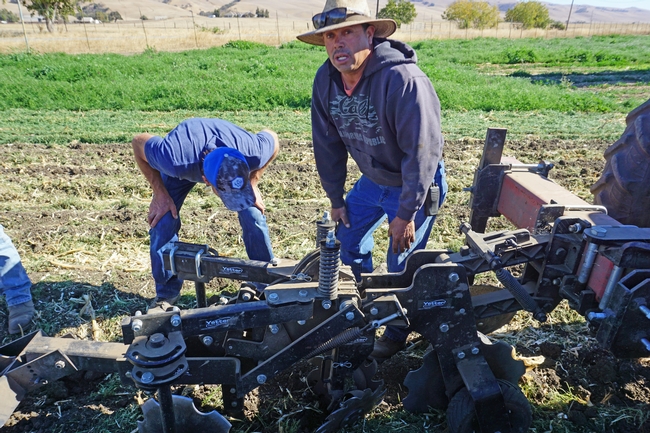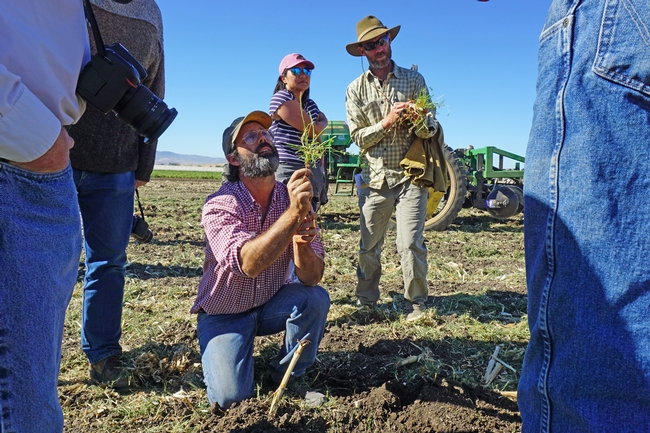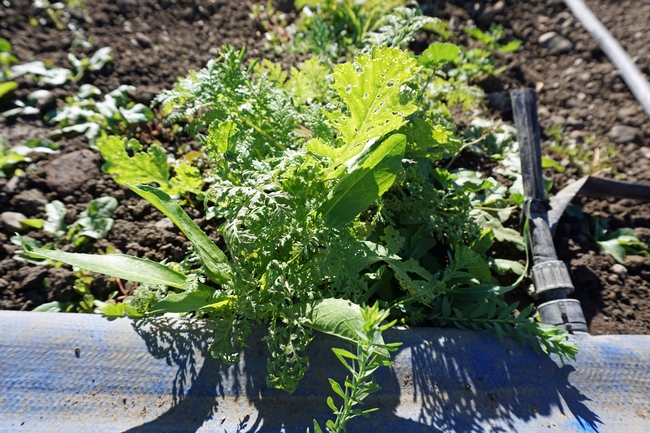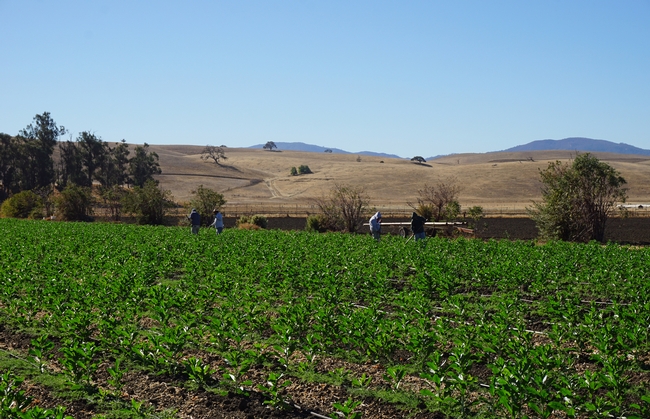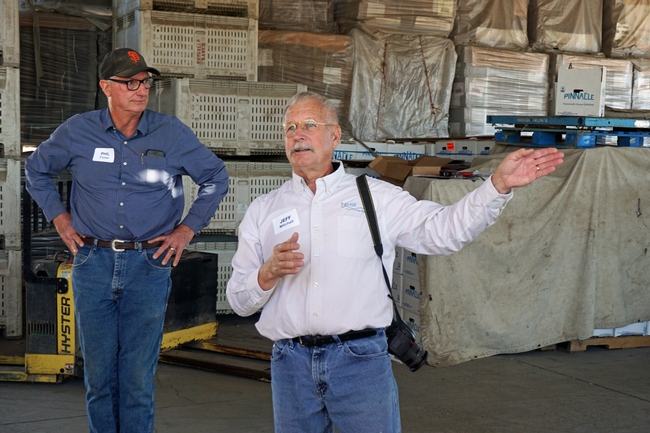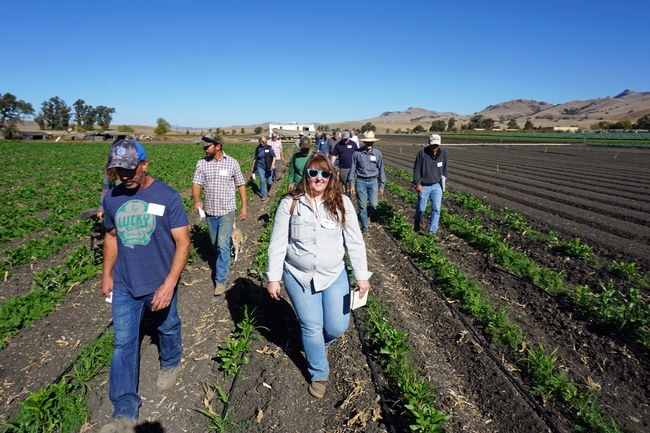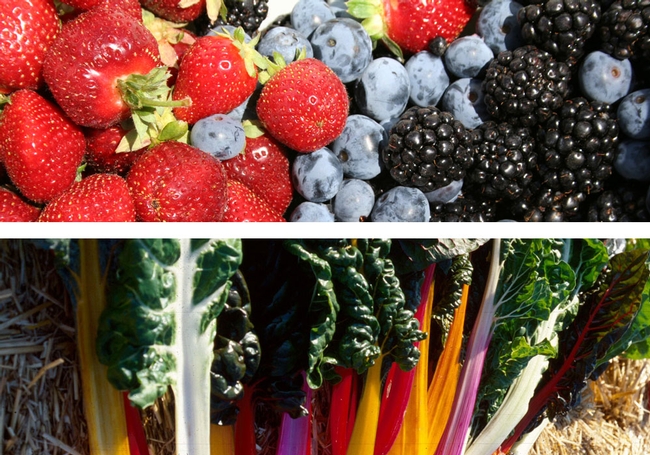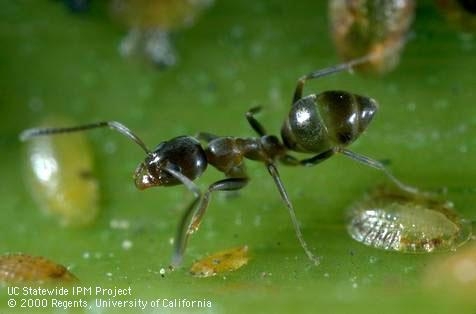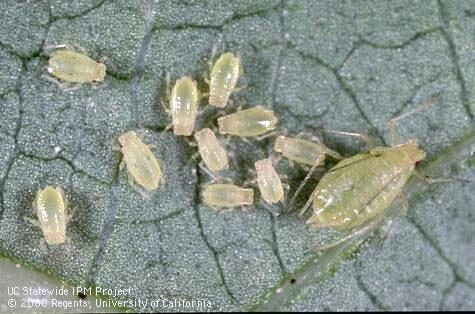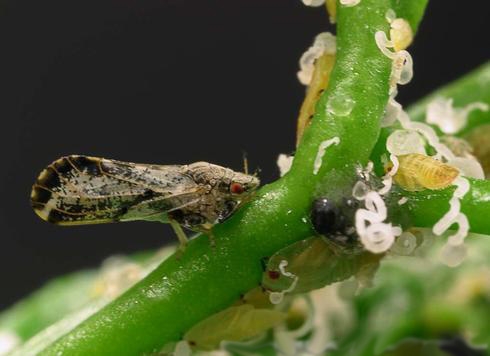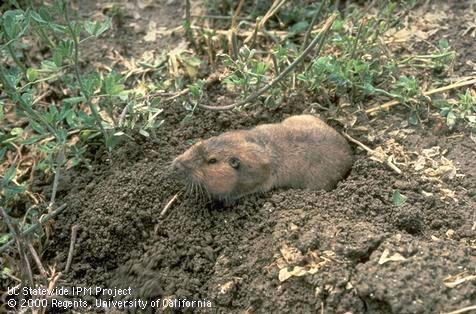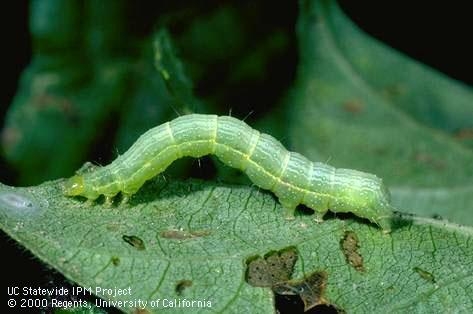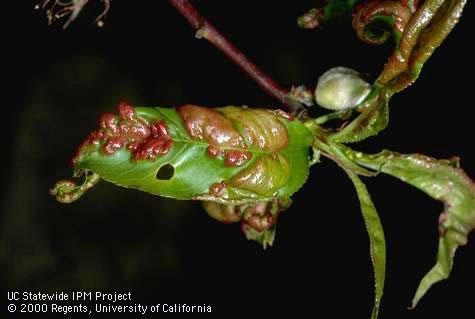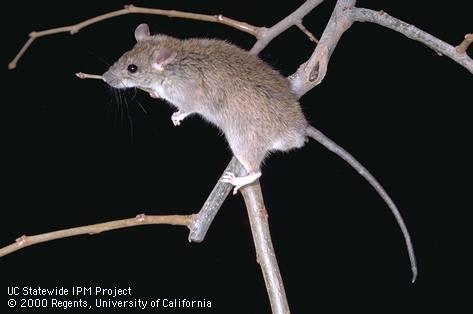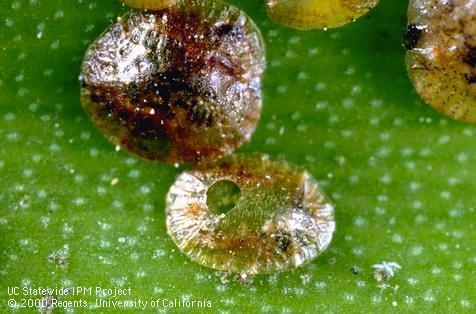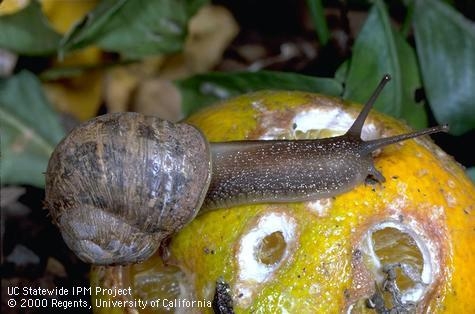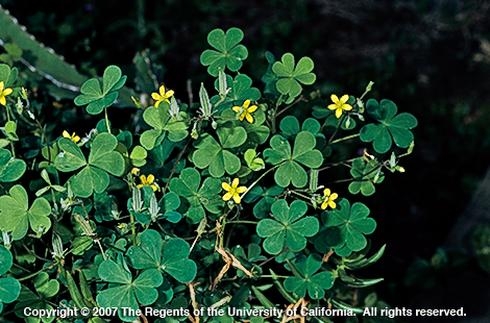Posts Tagged: vegetables
UCCE advisor speaks about vegetable grafting at neighboring university
Zheng Wang, vegetable crops advisor with UC Cooperative Extension in Stanislaus County, visited an ag class at Stanislaus State to discuss a state-of-the-art vegetable production practice that involves grafting, reported Alivah Stoeckl in Stan State News.
Grafting plants onto specially bred rootstocks is a practice that is common in tree crops. Grafting confers resistance to soil-borne diseases and pests, requiring less inputs and leading to sustainable crop productivity. It is now being used in some vegetable and fruit crops, such as tomatoes, eggplant, watermelon, cucumbers and cantaloupe.
“Grafting conveys a lot of merits in terms of disease resistance and yield maintenance. It enriches the production practices by introducing more variety. And by making impossible things become possible,” Wang said.
Vegetable grafting has been used since early 2000s, but to many agriculture students the idea was new, reported Stoeckl.
“We're moving forward and advancing with our food which I think is interesting because we used to be all natural and simple but now it's all scientific,” said senior agriculture major Madeline Morataya.
New video series to spark interest in vegetable production of the future
A 26-episode weekly video series will debut May 13 on YouTube to help train the next generation of vegetable crop workers and increase their use of effective stewardship practices in vegetable production.
Projections for near-future retirements of people working in California's agricultural production, marketing and post-harvest handling sectors indicate severe re-staffing needs in the coming years. Technological advances have reduced manual labor in agriculture, but increased the need for skilled labor to maintain the sustainability of the vegetable industry.
“We already see it happening,” said Jeff Mitchell, UC Cooperative Extension vegetable crops specialist. “Robotic machines are now used for lettuce thinning in Salinas, but these technologies must be serviced by an educated workforce with knowledge in both mechanics and science.”
Mitchell assembled a team of professors from California's public universities with agricultural programs – UC Davis, Chico State, Fresno State and CalPoly San Luis Obispo - to pull together a series of videos designed to spark the interest and begin training future farmers and ag workers in sound agronomic, economic and environmental stewardship skills. The team received financial support from the California Department of Food and Agriculture Specialty Crops Block Grant Program.
“We know that maintaining California's leading role in producing abundant, safe vegetables is critical not only to Americans' health, but also to the state's economy,” Mitchell said.
The video series is offered on the UC Agriculture and Natural Resources (UC ANR) YouTube page on a playlist titled “Training of a New Generation of California Vegetable Producers.” UC ANR is the outreach arm of the University of California which, among other services, provides agricultural research, teaching and advising in all California counties.
Each Monday morning from May 13 through Nov. 4, a new video will premiere in the playlist. The video length ranges from 47 minutes to 7 minutes. The videos will also be made available to high school and college ag professors to use in the classroom.
“We believe that this series of videos on vegetable production will have broad interest beyond the classrooms,” Mitchell said. “The agricultural industry, students in other parts of the United States and the world, and the broader public all have an interest in understanding how the vegetables we eat are produced at the ever-increasing scale at which they are needed.”
The videos depict state-of-the-art technologies and techniques that are in use in many production regions of California today, vegetable farming systems used in other parts of the world, and increasingly popular cottage farming systems that are popping up in urban areas for easy access to healthful foods.
To receive a notification of each video premiere, follow the UC ANR Twitter feed at http://twitter.com/UCANR or set a reminder by visiting the playlist on YouTube.
Organic farmers and researchers strive to advance soil care
Organic farmer Phil Foster has developed a creative way to nurture the soil on his 200-acre farm near Hollister. He plants cover crops in a single line at the top of the planting bed, saving water and seed while keeping the furrows clear for irrigation.
"We were finding we couldn't use cover crops because of water," Foster said. The narrow strip makes the best use of the limited water supply, while garnering the benefits of cover crops - which buffer soil temperatures, inhibit weeds, increase soil microbial activity, improve water infiltration and add nutrients. Growing cover crops prepares the soil for the production of high-quality vegetables.
Foster is one of eight organic vegetable growers who are working with researchers at Chico State, Fresno State and UC Agriculture and Natural Resources on a project funded with a USDA grant designed to make significant improvements in soil care in organic production systems. He guided project participants around his farm, equipment yard and compost operation in early November to share the techniques he and his staff have developed over three decades to promote soil health.
Tour participants marveled at the soil characteristics, admiring tiny pores and roots in clods of dirt, evidence of the soil's capacity to move water and nutrients. They studied the plant and soil conditions after farm manager Efrain Contreras pulled a carefully crafted implement for rolling down the cover crop across the field with a tractor.
Foster credited Contreras, a 30-year employee, for his role in building the soil on the farm. Labor, Foster said, is his biggest cost. He has 50 full time staff, many with 5 to 20 years of experience.
"They are the key to to the success of the ranch," Foster said.
Minimizing and, eventually eliminating, soil disturbance can be combined with organic groundcover, year-round root growth and robust biological activity in the soil to further promote soil health. Following the tour, the farmers talked about ways to attain the goal on their farms of no-till organic vegetable production.
Foster said he will experiment with reducing soil disturbance to determine whether doing so will maintain or increase yields. Another farmer in the project, Scott Park of Meridian, Calif., 50 miles north of Sacramento, said he will dedicate eight acres of his organic farm to comparing the results when the cover crop is chopped and left on the soil surface to chopped and incorporated with tillage.
Paul Muller and Andrew Braitt of Fully Belly Farm in the Capay Valley suggested the researchers could help the farmers by identifying optimal, effective cover crop rolling techniques. Retired organic farmer Tom Willey of Madera suggested grant funds be used to purchase appropriate scale cover crop seeders for on-farm experimentation.
"We're making great progress," said project coordinator Jeff Mitchell, UC Cooperative Extension vegetable crops specialist. "By getting together regularly, we're seeing opportunities for moving further toward reduced-disturbance on the farms, identifying the equipment needs and establishing effective channels of communication."
Over the project's three-year term, the farmers and researchers will continue to experiment with soil-building techniques and share results.
USDA's nutrition advice doesn't align with spending
According to the USDA's dietary recommendations - which are represented in the MyPlate infographic - half the food Americans eat should be fruit and vegetables. However, the same agency allocates under one-half of 1 percent of agency funds to specialty crops like fruits and vegetables, reported Helene Bottemiller Evich in Politico.
For the story, Evich spoke to Glenda Humiston, vice president of UC Agriculture and Natural Resources (UC ANR), the research and outreach arm of the University of California. UC ANR extends science-based agricultural production and nutrition information to California farmers and communities. Humiston said California agricultural industry leaders have made it clear that they don't want traditional subsidies, like price supports.
"They want help with the infrastructure to do their jobs better," she said, including more funding for research labs and data collection that can help industry solve problems.
It isn't clear whether subsidies would reduce the cost of fruits and vegetables, nor does the potential of lower-cost healthy food ensure that people will eat it, the article said.
Many consumers also lack the time or the skills to prepare and cook their perishables. And some don't care for the flavor of healthful produce like kale, kohlrabi and rapini, to name a few.
The top fruits and vegetables consumed by Americans are potatoes (french fries) and tomatoes (primarily driven by ketchup). Only 14 percent of Americans consume 1.5 to 2 fruits and veggies per day, according to State of the Plate, a 2015 study on Americas' consumption of fruit and vegetables. (See below.) The USDA's dietary guidelines recommend 9 to 13 servings of fruit and veggies per day.
State of the Plate, a 2015 Study on America's Consumption of Fruit and Vegetables by the Produce for Better Health Foundation.
Top 10 pests in gardens and landscapes and how to control them
Download the free booklet at the bottom of the page!
1. Ants
Most people deal with ants around their home at some point. Because most ants live outdoors, focus efforts on keeping ants from entering buildings by caulking entryways. Follow good sanitation practices to make your home less attractive to ants. Spraying ants inside the home will not prevent more ants from entering. Use baits to control the ant colony. Pesticide baits work by attracting worker ants who then take the poison back to the nest where the entire colony, including queens, can be killed. In the landscape, ants protect honeydew-producing pest insects from predators, so use sticky barriers or insecticide baits to keep ants out of trees and shrubs.
- Find out more at http://www.ipm.ucanr.edu/QT/antscard.html
2. Aphids
Aphids can curl leaves and produce sticky honeydew, but they rarely kill plants and you usually can wash them off with water. When aphid numbers get high, natural enemies such as lady beetles (lady bugs), lacewings, syrphid fly larvae, soldier beetles and others frequently feed on them, eliminating the need for pesticides. Protect these good bugs by avoiding the use of insecticides that can be toxic to a broad variety of insects. Ants protect aphids from these natural enemies, so keep ants away from your garden as well. When pesticides are necessary, use less toxic products such as insecticidal soaps and oils.
- Learn more about controlling aphids here: http://www.ipm.ucanr.edu/QT/aphidscard.html
3. Asian citrus psyllid and Huanglongbing disease
The Asian citrus psyllid (ACP) and the deadly bacterial disease it spreads, Huanglongbing (HLB), threaten citrus trees in backyards and on farms. There is no cure or effective control method for HLB disease. All types of citrus—including oranges, grapefruit, lemons, and mandarins—are affected as well as a few closely related ornamentals. ACP and HLB have already devastated the Florida citrus industry, and now that it is in the Western U.S. it is threatening the California citrus industry as well.
- See where the outbreaks are in California with our helpful Asian citrus psyllid website: http://ucanr.edu/sites/ACP/Distribution_of_ACP_in_California/
- Contact your agricultural commissioner's office, or call the California Department of Food and Agriculture (CDFA) Exotic Pest Hotline at 1-800-491-1899 to confirm a find. Learn more about ACP here: http://www.ipm.ucanr.edu/QT/asiancitruscard.html
4. Gophers
Gophers are small burrowing rodents that feed on roots of many types of plants. A single gopher can ruin a garden in a short time, and gopher gnawing can damage irrigation lines and sprinkler systems. In lawns, their mounds are unsightly and interfere with mowing. Early detection is critical to prevent damage. Use both traps and underground fencing to manage gopher problems. Toxic baits are available but can pose threats to wildlife, pets, and children, especially in backyard situations.
- Learn more about protecting your garden and landscape from gophers here: http://www.ipm.ucanr.edu/QT/gopherscard.html
5. Leaf-feeding caterpillars
Caterpillars, which are the larvae of butterflies and moths, damage plants by chewing on leaves, flowers, shoots, and fruit. Caterpillars in fruit or wood can be difficult to manage because they are hidden most of their life and can cause serious damage even when numbers are low. However, many plants, especially perennials, can tolerate substantial leaf damage, so a few leaf-feeding caterpillars often aren't a concern. Handpicking and beneficial predators and parasites often provide sufficient control. Look for feeding holes, excrement, webbed or rolled leaves, caterpillars, eggs, and good bugs.
- Learn more here:http://www.ipm.ucanr.edu/QT/lfcaterpillarscard.html
6. Peach leaf curl
Peach leaf curl is a fungal disease that affects only peach and nectarine trees. Distorted, reddened foliage in the spring is a distinctive symptom. New leaves and shoots thicken and pucker and later may die and fall off. An infection that continues untreated for several years can lead to a tree's decline. To prevent peach leaf curl, treat peach and nectarine trees with a copper fungicide every year after leaves fall. After symptoms appear in the spring, any treatment will not be effective. When planting new trees, consider buying peach tree varieties that are resistant to the disease.
- To learn more about preventing peach leaf curl click here: http://www.ipm.ucanr.edu/QT/peachleafcurlcard.html
7. Rats
Rats eat and contaminate food, garden produce, and fruit, and transmit diseases to humans and pets. Manage rats by removing food and shelter, eliminating entryways into buildings, and trapping. Snap traps are the safest, most effective, and most economical way to trap rats. For Norway rats, place traps close to walls, behind objects, in dark corners, and in places where you have found rat droppings. For roof rats, place traps in off-the-ground locations such as ledges, shelves, branches, fences, pipes, or overhead beams. Ensure traps are out of reach of children and pets.
- Learn more about preventing and controlling rats here: http://www.ipm.ucanr.edu/QT/ratscard.html
8. Scales
Scale insects suck plant juices and are pests of many trees and shrubs. Infestations can cause yellowing or premature dropping of leaves, sticky honeydew, and blackish sooty mold. Plant parts can distort or die back, depending on the species and abundance of scales. Most plants tolerate low to moderate numbers of scales. Provide plants with proper cultural care, especially irrigation. Encourage scale predators such as lady beetles or lacewings and look for parasite emergence holes in scale covers. Use sticky barriers or insecticide baits to selectively control scale-tending ants. Consider replacing problem-prone plants because most scales are highly specific to certain plants.
- Learn more about controlling scale populations here: http://www.ipm.ucanr.edu/QT/scalescard.html
9. Snails and slugs
These slimy mollusks emerge from hiding at night and chew holes in leaves and flowers of many succulent garden plants and fruit. Management requires a vigilant and integrated approach that includes eliminating moisture and hiding spots, trapping, setting up barriers, and handpicking. Regularly remove snails from shelters you can't eliminate such as low ledges on fences, undersides of decks, and meter boxes. Place traps in your garden and dispose of trapped snails and slugs daily. Reduce moist surfaces by switching to drip irrigation or watering in the morning rather than later in the day. Consider snail-proof plants such as impatiens, geraniums, begonias, lantana, nasturtiums, and many plants with stiff leaves and highly scented foliage such as sage, rosemary, and lavender.
- Learn more about controlling snails and slugs with and without pesticides in your garden here: http://www.ipm.ucanr.edu/QT/snailsslugscard.html
10. Weeds in landscapes
Prevent weed invasions in new beds with good site preparation. Keep weeds out with an integrated program that includes competitive plants, mulches, and hand removal. Be particularly vigilant about removing aggressive perennial weeds. You rarely should need herbicides in established landscape plantings. Mulches prevent weed seed germination by blocking sunlight. Remove small weeds by hand before they flower and set seed. Use shallow cultivation or hoeing to remove annual weeds from ornamental plantings. Only use herbicides for special-problem situations before establishing new plantings or for difficult-to-control perennial weeds.
- Learn more about controlling weeds in your landscape here: http://www.ipm.ucanr.edu/QT/landscapeweedscard.html
To see all of the University of California's Statewide Integrated Pest Management Program's information on home, garden, and landscape pests, visit http://www.ipm.ucanr.edu/PMG/menu.homegarden.html
For other short pest “Quick Tips” like the ten above, see http://www.ipm.ucanr.edu/QT/
To read even more in-depth, peer-reviewed information on many other common home and landscape pests in California, see the Pest Notes series at http://www.ipm.ucanr.edu/PMG/PESTNOTES/index.html


